|
BULB LOG 47 --- 22nd November 2006
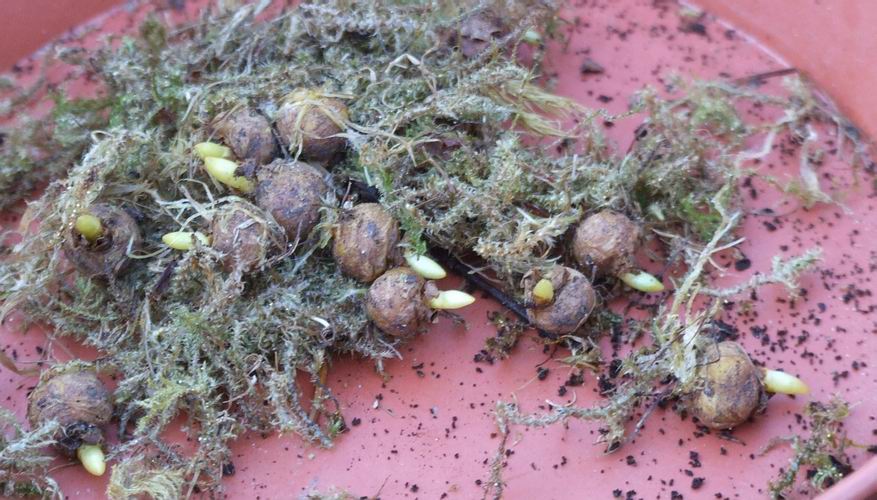
Corydalis malkensis bulbs
The bad treatment of bulbs is never to be recommended but when it is done accidentally or absentmindedly, it often provides us with interesting observations. These Corydalis malkensis bulbs have been stored in just moist moss (raked out of my neighbour's lawn) in a plastic zip lock bag and have been lying in a corner of my bulb shed since July. As you can see they have come to no harm at all and it is fascinating to see that as their shoots slowly extend they have very little in the way of roots yet; closer inspection reveals the roots are just starting to grow.
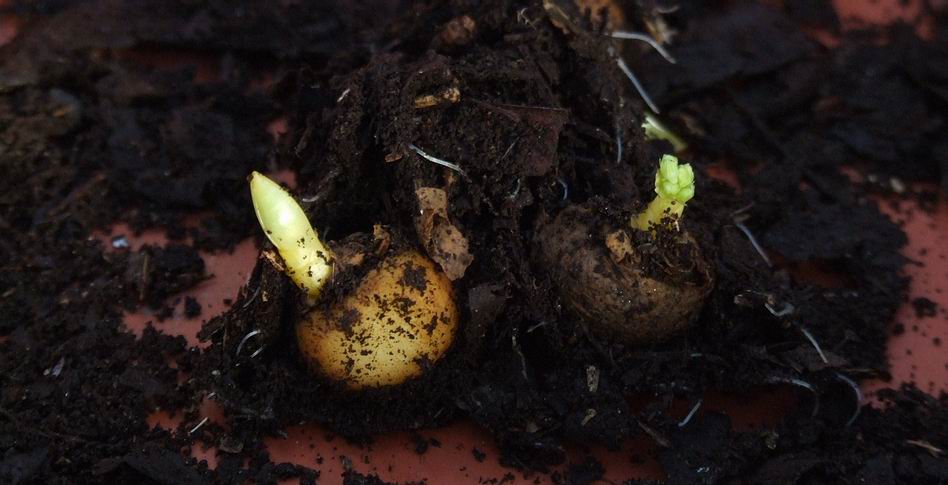
Corydalis 'Beth Evans'
A few corms of Corydalis 'Beth Evans' also spent the last few months in a similar situation except they were stored in leafmould. Note how they are also extending their shoots, you can even see the embryo flowers in the one on the right, and they have quite a lot of root growth. The question I am now asking myself is, are these roots appearing on Corydalis 'Beth Evans' because it has a slightly different growth pattern to C. malkensis or is the different degree of root activity a result of being stored in leaf mould as opposed to moss? I am going to have to do a controlled experiment next year to satisfy my curiosity; if I can remember.
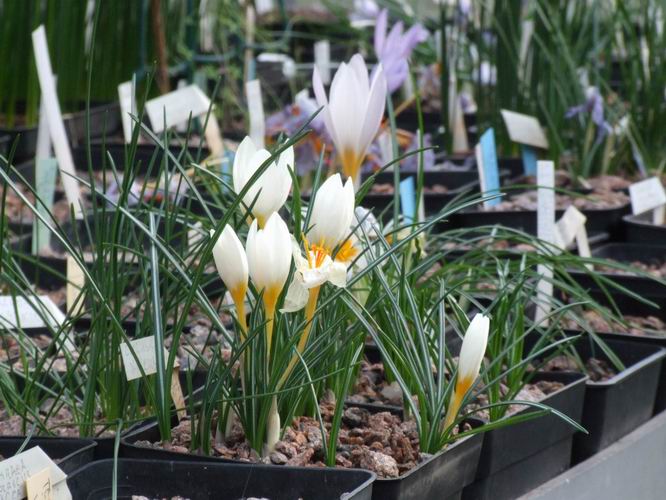
Crocus hadriaticus
A late pot of Crocus hadriaticus is still in flower over a month after the first pot flowered, all helping to extend the early Crocus season.
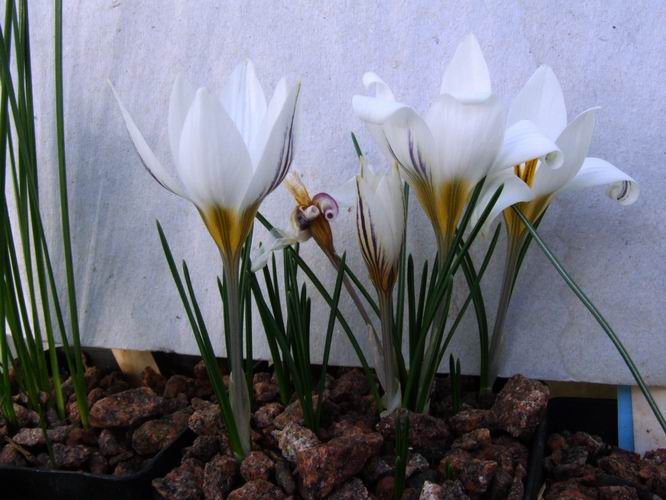
Crocus biflorus melantherus
Also in full flower is Crocus biflorus ssp melantherus, no I have not made a mistake, this is an autumn flowering subspecies of the very variable spring flowering Crocus biflorus.
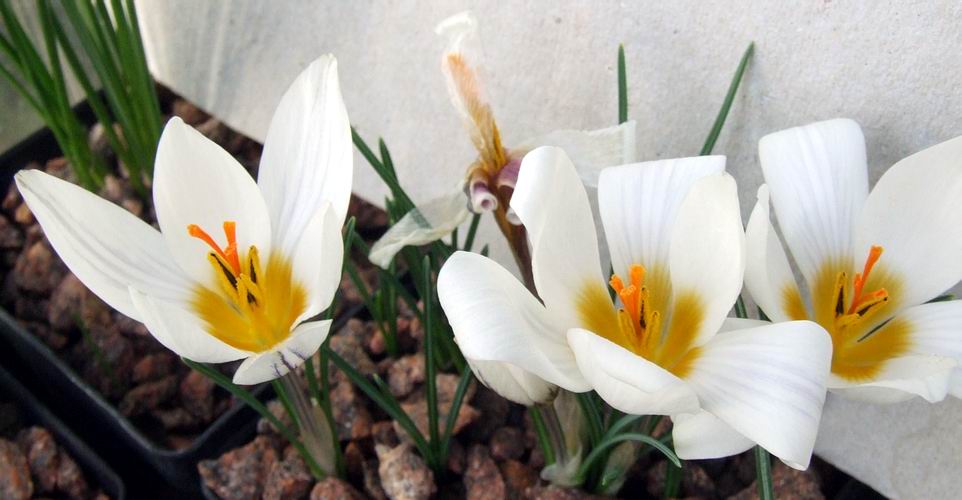
Crocus biflorus melantherus inside flowers
Looking inside the flowers you can see one of the other diagnostic features of this sub species and that is the black anthers. They are black before they dehisce (open) and you can still see the black anther casing surrounded by the golden yellow pollen grains.
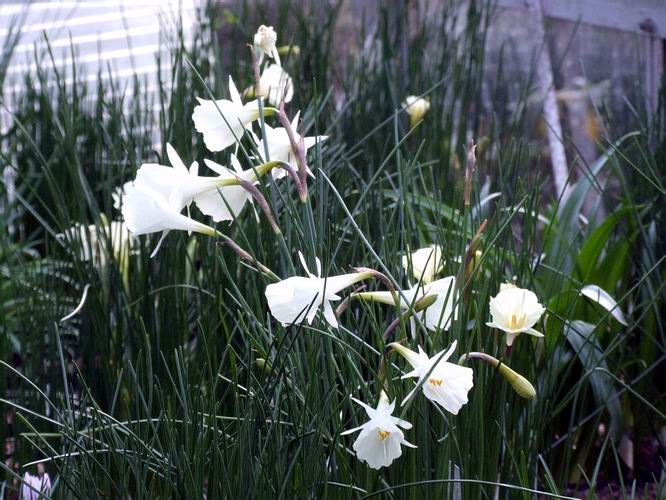
Narcissus cantabricus foliosus
One pot of Narcissus cantabricus var foliosus should be much like another but life with bulbs is never that simple. If you think that the taxonomy of the hoop petticoat narcissus in the field is difficult to follow then you should try sorting it out in cultivation where we get all sorts of mis-names and hybrids occurring.
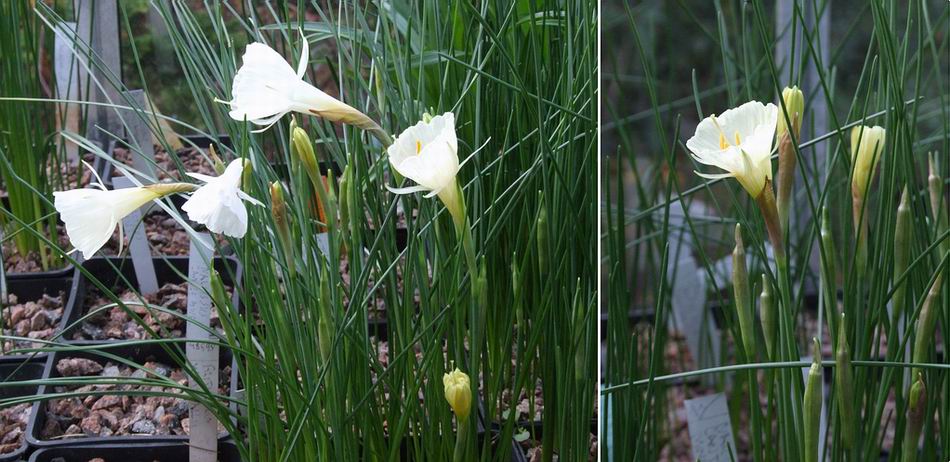
Narcissus cantabricus monophyllus
Here is a pot worked up from a few bulbs that I received as Narcissus cantabricus var monophyllus which does look superficially similar.
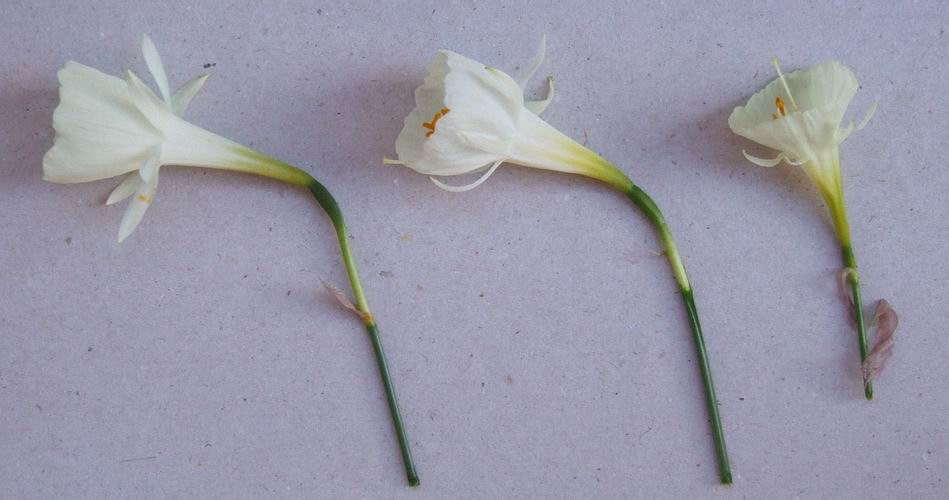
Narcissus cantabricus
Let us look at the flowers in a bit of detail, especially the pedicel, where I have peeled back the spathe (the papery bract). The pedicel is the part of the flower stem that bridges between the top of the main stem, or scape, and goes up to the ovary at the back of the flower. When an ovary is outside the flower, like it is in Narcissus, this is called an inferior ovary: if it were completely inside the flower, like in a lily for instance, then it would be described as a superior ovary. Just to annoy the taxonomists some plants have an ovary that is half in and half out of the flower, I cannot think of a bulb like that off hand but there are a number of Ericaceous plants that exhibit this feature. Back to the Narcissus and the pedicel: it is written that Narcissus cantabricus var foliosus has a pedicel of between 9 to 17 mm while the pedicel is absent in Narcissus cantabricus var monophyllus. The two flowers to the left, one from each of the two pots above, while exhibiting slight differences, both have a d
istinct pedicel so I think should conform to var foliosus so I have to put a big question mark on the pot of var monophyllus. The flower on the right has almost no pedicel and is also labelled N. cantabricus var monophyllus and it has a very sweet scent can this be the correct plant? Ah well, what ever they may be called, I love them all and it keeps me busy going back and forward between the books and the flowers trying to work out what they should be called - perhaps they have all hybridised in cultivation.
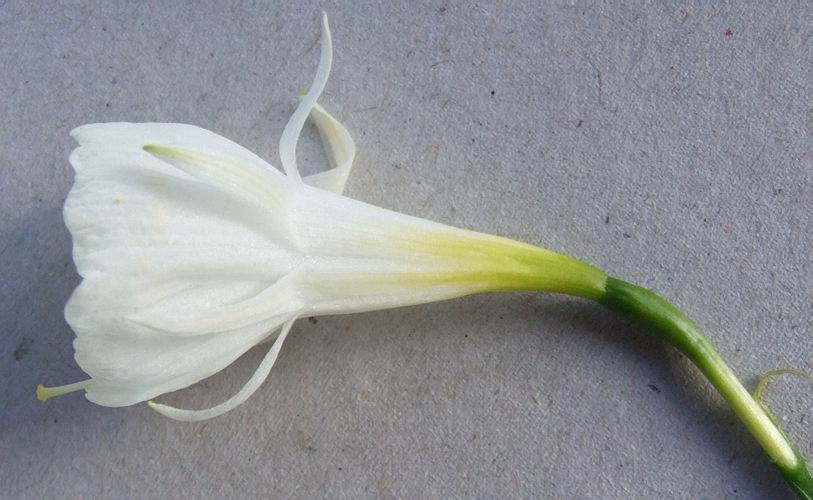
Narcissus cantabricus flower
When I take a close look at one of the above flowers it has green tips to the petals and displays some of the features described for the variety kesticus!! At least the taxonomists do recognise that the differences between these flowers are not sufficiently distinguishable to give them sub specific status - they are just varieties.
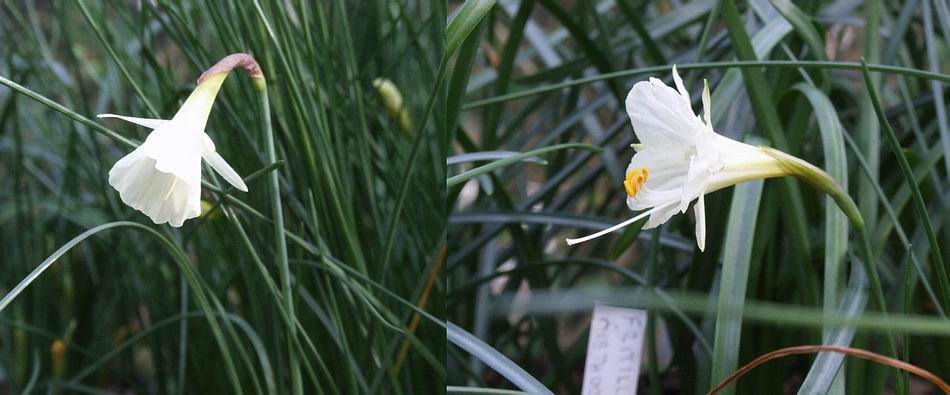
Narcissus flowers style and stamens
Enough about the complexities of putting precise names to the Narcissus let's just look at a few for their beauty. Two here easily distinguished by the protruding style and anthers of the right hand specimen.
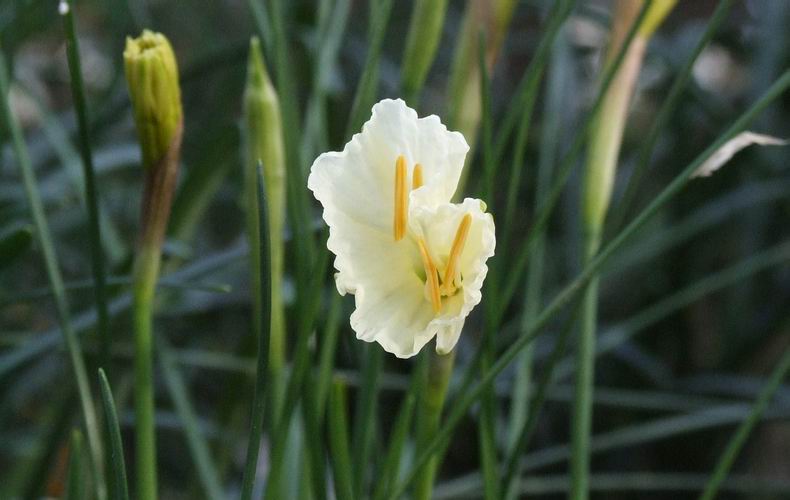
Narcissus flower unfolding
Even the way they unfold as they emerge from their buds, like a silk parachute which has been carefully folded to ensure that it deploys correctly, the wrinkles gradually unfurl and in a few days the flower will be perfectly open.
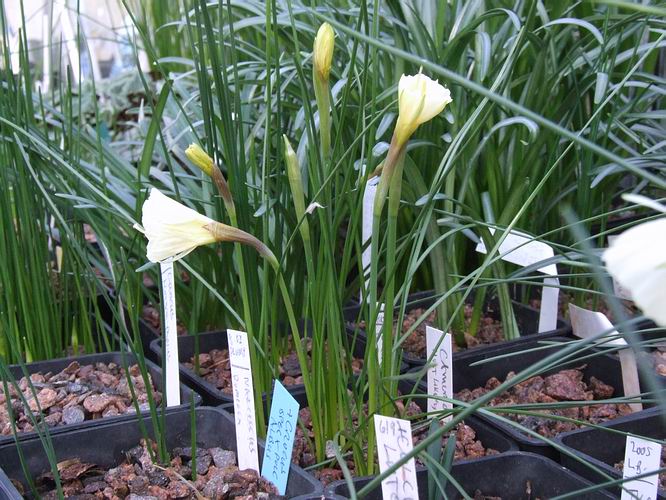
Narcissus seedlings ex 'Camoro'
These I know are hybrids among Narcissus cantabricus and romieuxii as they are seedlings raised from the fertile cross Narcissus 'Camoro' a cross between CAntabricus var MOnophyllus and ROmieuxii.
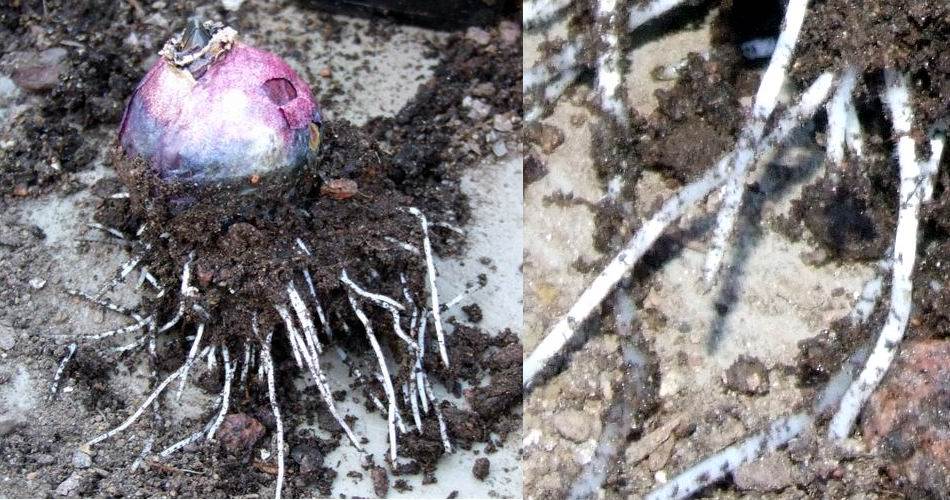
Hyacinth bulb roots
Just to show that it is not only the rare bulbs that I grow here is a common Hyacinth bulb of the type we buy every year so we can enjoy the wonderful blooms and scent in the house during the dark winter days. I start them off under the bench in the cold glasshouse, laid on a layer of compost in shallow seed trays until the roots establish. Then I pot them up and bring them into our kitchen, one by one, where they will be forced into flower by the heat in four to six weeks
^ back to the top ^
|

